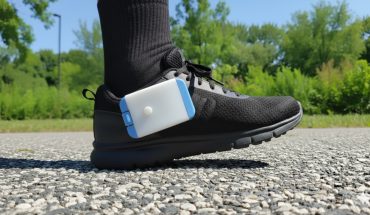It’s seen as ‘a game-changing technology’.
But more than creating new immersive and interactive gaming experiences, advanced eye tracking technology can change the way we diagnose complex health issues.
At the Toronto-based Rotman Research Institute at Baycrest, pioneering research into the use of eye tracking as a tool to understand memory has been underway, working with advanced eye-tracking technology from SR Research Ltd. based in Ottawa. Patients with mental illnesses, particularly psychosis and obsessive‒compulsive disorder (OCD), were tested to see how memory changes with age or with neurological problems. While some traditional tests used to diagnose memory impairments are hindered by language, particularly for patients whose mother tongue is other than English, eye-tracking tests are a reliable alternative, researchers describe. Baycrest has several SR Research EyeLink eye trackers (including two head-mounted systems, two portable and a fixed system). EyeLink systems provide fast and accurate tracking of a person’s eye movements as the person looks at static and dynamic images, reads text, and even when there is no visual stimulation, as part of testing for cognitive decline and dementia.
From eye health to mental health, eye tracking technology developed and applied here in Canada is contributing to global gains in our understanding of mental, emotional and medical issues including anxiety, concussion, dementia, epilepsy, bipolar disorder, psychosis and obsessive-compulsive disorders (OCD).
Be it for medical diagnosis or gaming enjoyment or advanced spatial computing and training applications, eye tracking technology is an important and valuable interface between humans and computers.
(Valuable enough, it seems, that one leading Canadian developer of advanced eye tracking technology is target for acquisition by U.S. tech giant Google.
Reports first surfaced some three months ago that Google parent company Alphabet was making a $115 million play for a Waterloo, ON-based tech firm called AdHawk Microsystems.
The deal has not been formally announced or confirmed, but Adhawk’s website – and that of its newest eye tracking product, MindLink Air – recently went offline. A request for comment went unanswered.)
AdHawk launched in 2017, and it developed technology to push eye health and behavioural research forward, including the chips, hardware, and software used in advanced eye tracking. Adhawk’s Mindlink technology was offered to various manufacturers, and the company received venture financing and support from global firms like Samsung, Intel, and Ray-Ban.
Earlier this year, at the CES electronics show, AdHawk introduced Mindlink Air as a consumer product, in wearable smart glasses form, with hardware and software updates for AR and mixed reality experiences, as well as health care research.

Adhawk develops hardware and software for eye tracking applications, like its recently introduced MindLink Air.
It was a well-received debut. Unlike other eye tracking systems which may use lasers, along with tiny cameras or sensors, to track eye movement, MindLink Air uses tiny micro-mirrors (in what’s called an ultra-compact micro-electromechanical system, or MEMS) to scan infrared light across the eye. The technology can measure eye characteristics like movement and gaze direction, pupil size, and depth perception in real-time, with the ability to capture gaze characteristics 500 time per second with an accuracy of better than one degree, the manufacturer has described.
Dr. Neil Sarkar is the co-founder of Adhawk Microsystems, and the inventor of the MEMS system which underpins its eye tracking technology. He brought more than 15 years’ experience as a microsystem design engineer, focused on ultra-precise mechatronic systems, to the eye tracking project.

Neil Sarkar, CEO of AdHawk Microsystems
Prior to that, Sarkar and his team worked at ICSPI Corp, a spin-off out of University of Waterloo that’s developing and commoditizing tools for nanometer scale metrology, or measurement. A Waterloo Engineering alumnus, Dr. Sarkar is a PhD fellow of the Waterloo Institute for Nanotechnology and the winner of the Douglas Colton Award for research excellence in microsystems.
Throughout the development of Adhawk products and capabilities, the company was supported by the skills of nearby University of Waterloo students, among whom were those who helped create a set of robotic eyes to test and measure the new smart glasses, and those working on the user interface visualization and graphic presentation of underlying biometric data that the system gathers.
The data gathered by advanced eye tracking systems like those from Adhawk can help the wearer adjust their basic daily health and wellness routine to simply improve productivity and avoid mental fatigue. They can also aid researchers and health care providers in understanding the progression of complex neurodegenerative conditions like Alzheimer’s and Parkinson’s disease.
That’s a big step forward (or maybe an eye-watering development?) in the history of eye tracking technology.
First developed more than a century ago by a man named Edmund Huey to track a person’s eyes while reading, the earliest eye tracking technology was complicated, intrusive, and very immobile (both the device and the person being eye-tracked had to sit in a fixed stationary position).
But it did set the stage for today’s sophisticated, capable, and much-more comfortable eye tracking game-changers.
# # #

MindLink Air glasses can read the health and cognitive state of the person wearing them, using research-grade, camera-free eye-tracking technology developed in Canada.
-30-



